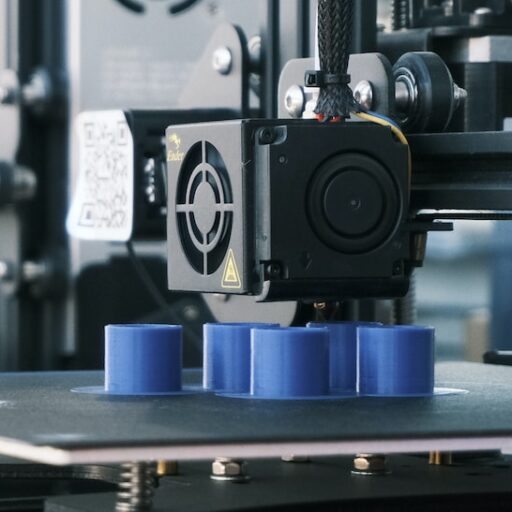Support our educational content for free when you purchase through links on our site. Learn more
Can I Sell Anything I 3D Print? 10 Essential Insights You Need to Know! 🤑
Have you ever gazed at your latest 3D print and thought, “I could sell this!”? You’re not alone! Many hobbyists are diving into the world of 3D printing with dreams of turning their passion into profit. But before you start cranking out custom figurines or quirky home decor, there’s a lot to consider. Did you know that over 60% of 3D printing enthusiasts are exploring ways to monetize their creations? However, the journey from hobbyist to entrepreneur is filled with legal hurdles, quality control challenges, and marketing strategies that can make or break your success.
In this comprehensive guide, we’ll explore everything you need to know about selling your 3D printed items, from the legal landscape to the best platforms for sales. Plus, we’ll share tips on pricing, quality control, and effective marketing strategies to help you stand out in the crowded marketplace. So, are you ready to turn your 3D printing hobby into a thriving business? Let’s dive in!
Key Takeaways
- Understand the Legal Landscape: Not everything you print can be legally sold; always check copyright and trademark laws.
- Quality is Crucial: Ensure your prints are of high quality to satisfy customers and build a good reputation.
- Know What to Sell: Explore various profitable items, from jewelry to functional gadgets.
- Choose the Right Platform: Use marketplaces like Etsy, eBay, and Shapeways to reach your target audience.
- Effective Marketing Matters: Utilize social media, content marketing, and collaborations to promote your products.
Ready to explore the world of 3D printing sales? 👉 Shop 3D Printers on: Amazon | Walmart | Etsy and start your journey today!
Table of Contents
- Quick Tips and Facts about Selling 3D Printed Items
- Understanding the Legal Landscape of Selling 3D Prints
- What Can You Sell? A Comprehensive List of 3D Printable Products
- The Best Platforms for Selling Your 3D Printed Creations
- Marketing Your 3D Printed Products: Tips and Tricks
- Quality Control: Ensuring Your 3D Prints Are Sale-Ready
- Pricing Strategies for Your 3D Printed Goods
- Customer Service Essentials for 3D Print Sellers
- Common Pitfalls to Avoid When Selling 3D Prints
- The Future of 3D Printing and E-commerce
- Conclusion
- Recommended Links
- FAQ
- Reference Links
1. Quick Tips and Facts about Selling 3D Printed Items
So, you’re fired up about turning your 3D printing hobby into a money-making venture? Awesome! But before you start printing a mountain of Baby Yodas Thingiverse to sell, let’s cover some quick tips and essential facts. What can I 3D print to make money? Find out in our related article.
- ✅ Legality Check: First things first, not everything you print can be legally sold. Copyright and intellectual property rights are a thing! Selling unlicensed fan art or copyrighted designs is a no-go. More on this later.
- ✅ Quality is King: Nobody wants a wonky, half-melted Yoda. Ensure your prints are top-notch. Think smooth surfaces, crisp details, and robust construction.
- ✅ Know Your Niche: What unique spin can you offer? Focusing on a specific niche (like jewelry, home decor, or quirky gadgets) can help you stand out from the crowd.
- ✅ Marketing Matters: Even the coolest 3D prints won’t sell themselves. Spread the word about your creations through social media, online marketplaces, and craft fairs.
- ✅ Price it Right: Factor in material costs, printing time, and your desired profit margin. Don’t undervalue your work!
- ❌ Don’t Overpromise: Be realistic about production times and shipping. Disappointed customers are not repeat customers.
2. Understanding the Legal Landscape of Selling 3D Prints
Navigating the legal aspects of selling 3D prints can feel like traversing a minefield of copyrights, trademarks, and patents. But don’t worry, we’ll break it down for you. As one user on Reef2Reef wisely put it, “I have not sold a lot of 3d printed items, but when I do, I get written permission from the creator.” This is excellent advice!
Copyright Considerations
Copyright protects original artistic and literary works, including 3D designs. Downloading and selling prints based on someone else’s copyrighted design without permission is infringement. Always check the license! Creative Commons licenses (CreativeCommons.org) offer varying levels of permission, but even then, selling might be restricted. When in doubt, reach out to the creator. A simple email can save you a lot of legal trouble.
Trademark Troubles
Trademarks protect brand names and logos. Selling 3D prints featuring trademarked logos (like superhero emblems or company symbols) is a big no-no unless you have permission from the trademark holder.
Patent Predicaments
Patents protect inventions. If you’re selling a 3D printed product that infringes on someone else’s patent, you could face legal action. Researching existing patents before launching your product is crucial.
Navigating Licenses
- Public Domain: Works in the public domain are free for anyone to use, modify, and sell. However, be sure to verify that a design is truly in the public domain.
- Creative Commons: These licenses offer varying levels of permission. Some allow commercial use, while others don’t. Always read the specific license terms carefully.
- Royalty-Free: Royalty-free doesn’t mean free! You typically pay a one-time fee to use a design, but you don’t have to pay ongoing royalties. However, commercial use may still be restricted.
3. What Can You Sell? A Comprehensive List of 3D Printable Products
The possibilities are as vast as your imagination! From practical gadgets to whimsical creations, the world of 3D printable products is your oyster. Here are some ideas to get those creative gears turning: What can I 3D print to make money? Find out in our related article.
-
Jewelry: Intricate designs, personalized pendants, and unique earrings are all within reach. Imagine printing a custom ring with a client’s initials! Check out some amazing jewelry designs on Thingiverse.
-
Home Decor: Spice up living spaces with 3D printed planters, vases, wall art, and even lamps. Geometric designs and personalized touches are always a hit. Explore Thingiverse for inspiration.
-
Gadgets & Accessories: Phone cases, keychains, cable organizers, and even custom headphone stands can be 3D printed. Practicality meets personalization! Find some cool gadget designs on Thingiverse.
-
Toys & Games: From action figures to board game pieces, 3D printing opens up a world of playful possibilities. Imagine printing a personalized chess set or a miniature replica of your favorite video game character. Thingiverse is a treasure trove of toy designs.
-
Miniatures & Models: Architectural models, miniature trains, and even tiny replicas of famous landmarks can be created with incredible detail. Explore the world of miniatures on Thingiverse.
-
Personalized Gifts: Custom keychains, engraved nameplates, and unique photo frames make for thoughtful and personalized gifts. Thingiverse has a wealth of gift ideas.
-
Functional Prints: Replacement parts, tool organizers, and custom brackets offer practical solutions to everyday problems. Find functional print designs on Thingiverse.
This is just the tip of the iceberg! The beauty of 3D printing lies in its versatility and ability to bring your unique ideas to life. Explore our categories on 3D Printable Objects, 3D Printing Innovations, and 3D Design Software for more inspiration.
4. The Best Platforms for Selling Your 3D Printed Creations
So, you’ve got a stockpile of awesome 3D prints ready to go. Now, where do you sell them? Choosing the right platform is crucial for reaching your target audience and maximizing your sales. Here are some popular options: What can I 3D print to make money? Find out in our related article.
-
Etsy: A haven for handmade and unique items, Etsy is a great platform for selling 3D printed crafts, jewelry, and personalized gifts.
-
eBay: Reach a massive audience on eBay, a global marketplace for all sorts of goods, including 3D printed products.
-
Shopify: Create your own online store with Shopify, giving you complete control over your branding and sales process.
-
Shapeways: A platform specifically for 3D printed products, Shapeways handles printing and shipping, allowing you to focus on design and marketing.
-
Cults3D: Sell your 3D models directly to customers on Cults3D, a platform dedicated to 3D printing enthusiasts.
-
Thingiverse: While primarily a repository for sharing 3D models, Thingiverse also allows creators to sell their designs.
-
MyMiniFactory: Another platform for selling 3D models, MyMiniFactory focuses on high-quality designs and offers various licensing options.
Choosing the right platform depends on your target audience, product type, and business model. Experiment with different platforms to find the best fit for you.
5. Marketing Your 3D Printed Products: Tips and Tricks
Even the most incredible 3D prints won’t sell themselves. Effective marketing is key to getting your creations noticed and generating sales. Here are some tips and tricks to boost your marketing game: What can I 3D print to make money? Find out in our related article.
-
Social Media Savvy: Showcase your prints on Instagram, Pinterest, and Facebook. High-quality photos and engaging captions are essential.
-
Targeted Advertising: Reach your ideal customers with targeted ads on social media and search engines. Focus on specific demographics and interests.
-
Content Marketing: Create blog posts, videos, and tutorials related to 3D printing and your products. Share your expertise and build a community.
-
Email Marketing: Build an email list and send out newsletters showcasing your latest creations and special offers.
-
Collaborations: Partner with other creators, influencers, or businesses to reach a wider audience.
-
Craft Fairs & Events: Sell your prints in person at local craft fairs, markets, and 3D printing events.
-
Influencer Marketing: Collaborate with influencers in the 3D printing community to promote your products.
Remember, consistency is key! Regularly posting, engaging with your audience, and staying up-to-date with marketing trends will help you build a strong brand and drive sales.
6. Quality Control: Ensuring Your 3D Prints Are Sale-Ready
Quality control is paramount when selling 3D prints. Customers expect a polished and professional product, free from flaws and defects. Here’s how to ensure your prints are sale-ready: What can I 3D print to make money? Find out in our related article.
-
Print Settings: Dial in your print settings for optimal results. Experiment with different layer heights, infill percentages, and print speeds.
-
Filament Choice: Use high-quality filament for the best results. Different filaments offer varying levels of strength, flexibility, and finish.
-
Post-Processing: Clean up your prints after printing. Remove support material, sand rough edges, and apply finishing techniques like painting or polishing.
-
Inspection: Carefully inspect each print for defects before shipping. Look for layer adhesion issues, warping, and any other imperfections.
-
Packaging: Package your prints securely to prevent damage during shipping. Use bubble wrap, foam inserts, or custom packaging.
By implementing a rigorous quality control process, you can ensure customer satisfaction and build a reputation for excellence.
7. Pricing Strategies for Your 3D Printed Goods
Pricing your 3D prints can be tricky. You want to make a profit, but you also want to stay competitive. Here are some pricing strategies to consider: What can I 3D print to make money? Find out in our related article.
-
Cost-Plus Pricing: Calculate your material costs, printing time, and other expenses, then add a markup for profit.
-
Value-Based Pricing: Price your prints based on the perceived value to the customer. Unique or highly sought-after items can command higher prices.
-
Competitive Pricing: Research the prices of similar 3D printed products on the market and price your items accordingly.
-
Premium Pricing: Position your prints as high-quality, premium products and charge a premium price.
-
Subscription Pricing: Offer a subscription service for regular deliveries of 3D printed items.
Consider your target audience, product type, and market conditions when choosing a pricing strategy. Experiment with different approaches to find the sweet spot.
8. Customer Service Essentials for 3D Print Sellers
Excellent customer service is crucial for building a loyal customer base and growing your 3D printing business. Here are some essential tips: What can I 3D print to make money? Find out in our related article.
-
Responsiveness: Respond to customer inquiries promptly and professionally.
-
Communication: Keep customers updated on order status and shipping information.
-
Problem Solving: Address customer issues and complaints effectively and efficiently.
-
Returns & Refunds: Have a clear return and refund policy in place.
-
Feedback: Encourage customer feedback and use it to improve your products and services.
By providing exceptional customer service, you can turn one-time buyers into repeat customers and build a strong reputation for your brand.
9. Common Pitfalls to Avoid When Selling 3D Prints
Selling 3D prints can be a rewarding venture, but there are some common pitfalls to avoid: What can I 3D print to make money? Find out in our related article.
-
Underestimating Costs: Accurately calculate your material costs, electricity usage, and other expenses to avoid losing money.
-
Ignoring Copyright: Respect intellectual property rights and avoid selling unlicensed designs.
-
Neglecting Quality Control: Ensure your prints are of high quality and free from defects.
-
Poor Customer Service: Respond to customer inquiries promptly and address issues effectively.
-
Overpromising: Be realistic about production times and shipping.
-
Lack of Marketing: Promote your products effectively to reach your target audience.
By avoiding these common pitfalls, you can increase your chances of success in the exciting world of 3D print sales. Explore our category on 3D Printing in Education to learn more.
10. The Future of 3D Printing and E-commerce
The future of 3D printing and e-commerce is bright! As 3D printing technology continues to evolve, we can expect to see even more innovative and personalized products being sold online. Mass customization, on-demand manufacturing, and decentralized production are just some of the exciting trends shaping the future of this industry. What can I 3D print to make money? Find out in our related article. Imagine a world where you can download and print almost anything, anywhere, anytime! The possibilities are truly endless.
Conclusion

In summary, the world of selling 3D printed items is both exciting and challenging. With the right approach, you can turn your passion for 3D printing into a profitable venture. Remember to navigate the legal landscape carefully, ensure quality in your prints, and market effectively to reach your audience.
Positives:
- Creative Freedom: You have the opportunity to create unique products that cater to niche markets.
- Low Start-Up Costs: With a 3D printer and some filament, you can start your business without a huge investment.
- Growing Market: The demand for customized and unique products is on the rise, making it a great time to enter the market.
Negatives:
- Legal Risks: Navigating copyright and trademark laws can be tricky, and selling unlicensed designs can lead to legal issues.
- Quality Control: Maintaining high-quality prints requires attention to detail and can be time-consuming.
- Market Saturation: With more people entering the 3D printing space, competition can be fierce.
Overall, if you’re willing to put in the effort and creativity, selling 3D printed items can be a rewarding endeavor. So, fire up that printer and start creating! 🚀
Recommended Links
- 👉 Shop 3D Printers on: Amazon | Walmart | Etsy
- 👉 Shop Filament on: Amazon | Walmart | eBay
- Books on 3D Printing: 3D Printing for Dummies | The 3D Printing Handbook
FAQ

What are the most profitable items to 3D print and sell?
H4: Popular Items to Consider
The most profitable items often fall into specific niches. Here are some popular categories:
- Custom Jewelry: Personalized rings, bracelets, and necklaces can fetch high prices.
- Home Decor: Unique vases, wall art, and decorative items are always in demand.
- Functional Items: Items like phone cases, tool organizers, and replacement parts can be very profitable due to their practicality.
Read more about “Can I 3D Print Anything and Sell It? 10 Essential Insights for 2024! 🖨️”
Are there any copyright laws I need to consider when selling 3D printed items?
H4: Understanding Copyright
Yes, copyright laws are crucial when selling 3D printed items. You must ensure that you have the right to sell any design you print. This includes:
- Checking Licenses: Always check the licensing of any design you download. Creative Commons licenses may allow for commercial use, but some do not.
- Seeking Permission: If a design is copyrighted, you should seek permission from the creator before selling it.
How do I determine the price of a 3D printed item to sell?
H4: Pricing Strategies
To determine the price of your 3D printed items, consider the following:
- Material Costs: Calculate the cost of filament and other materials used.
- Time Investment: Factor in the time it takes to print and finish the item.
- Market Research: Look at similar products to gauge competitive pricing.
- Desired Profit Margin: Add a markup that reflects the value of your work and expertise.
What are the best online marketplaces to sell 3D printed products?
H4: Top Marketplaces
Some of the best online marketplaces for selling 3D printed products include:
- Etsy: Great for handmade and unique items.
- eBay: A vast audience for various products.
- Shapeways: Specifically for 3D printed items, handling printing and shipping.
- Cults3D: A platform dedicated to 3D printing enthusiasts.
Read more about “🚀 Is There a Market for Selling 3D Printed Items? … 🏷️”
Reference Links
- Creative Commons
- Reef2Reef Discussion on Selling 3D Printed Items
- Prusa Forum Discussion on 3D Printing Business
- Thingiverse
- Cults3D
By following these guidelines and insights, you’re well on your way to successfully selling your 3D printed creations. Happy printing! 🎉



